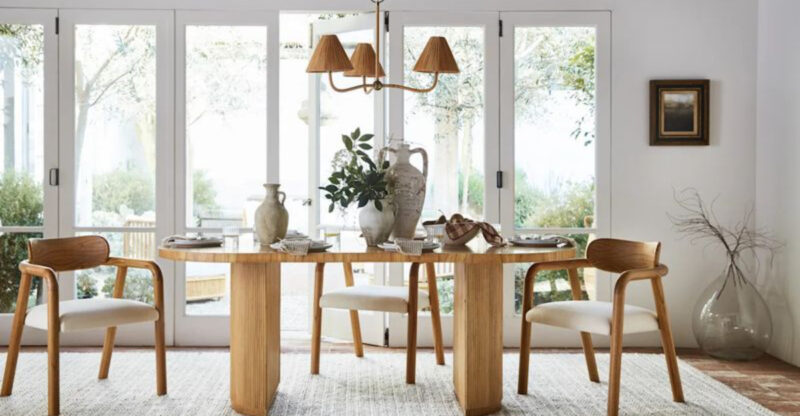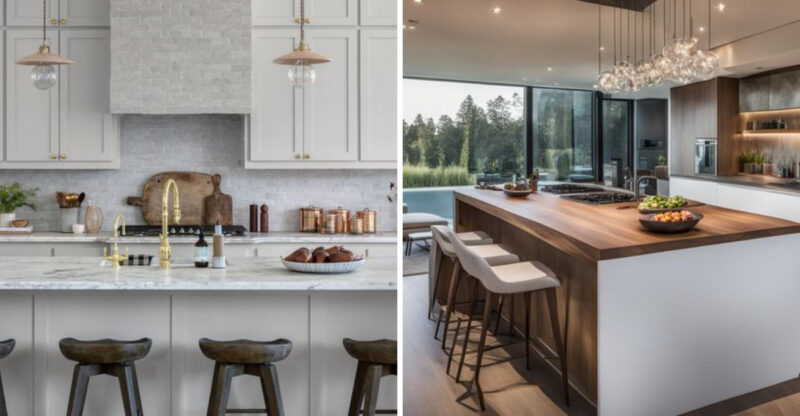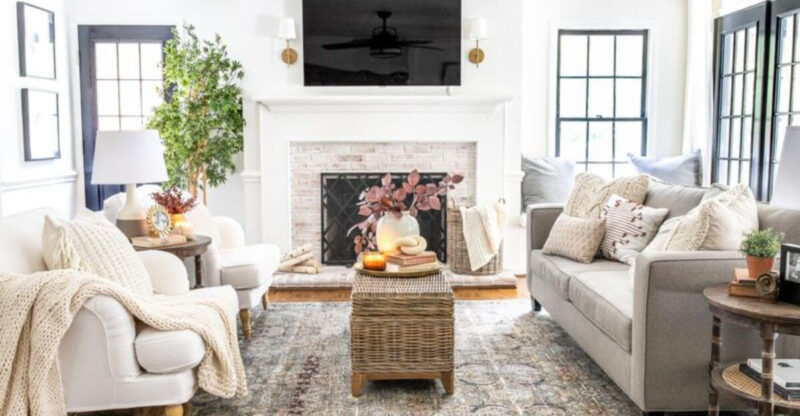18 Nostalgic Home Trends That Ruin Boomers’ Homes
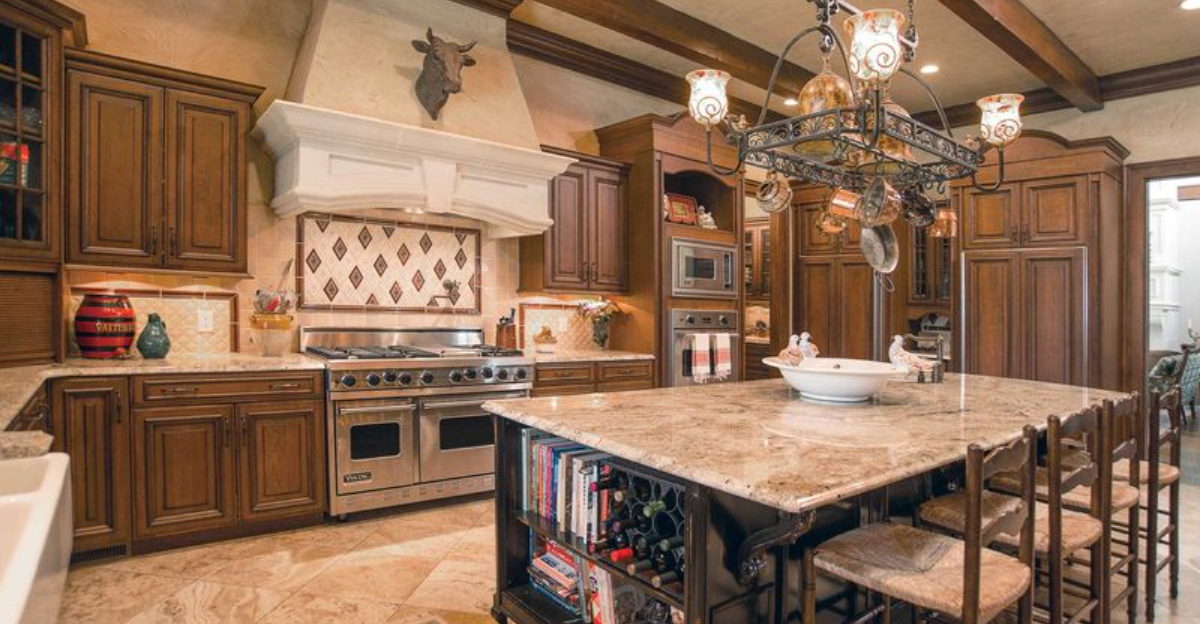
Remember those home design choices that seemed so trendy back in the day? Baby Boomers embraced specific styles that defined an era of homeownership.
While these decorating trends once symbolized success and style, they now make houses look dated and decrease property values. Let’s explore the nostalgic home features that Boomers might want to reconsider.
1. Popcorn Ceilings
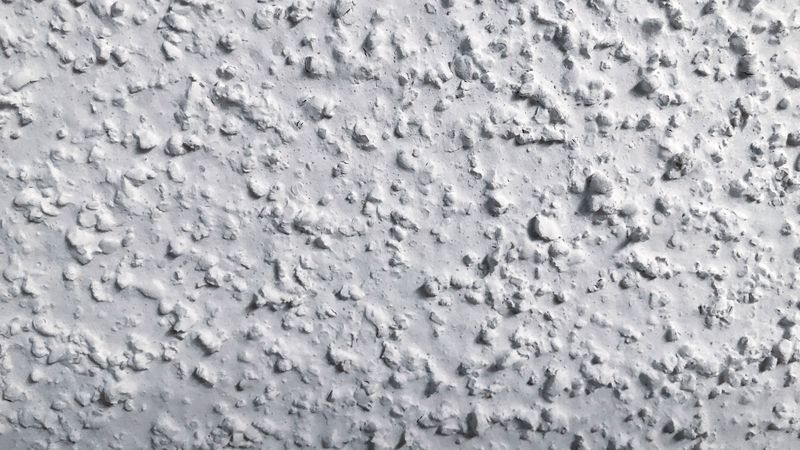
Once considered a luxury finish, these textured nightmares collect dust and cobwebs like nothing else. Popcorn ceilings were all the rage in the 60s and 70s.
Removing these bumpy eyesores can instantly modernize a room and make it feel taller. Plus, they’re notorious for potentially containing asbestos in older installations, making professional removal a smart investment.
2. Wall-To-Wall Carpeting

Plush under your feet but a nightmare for allergies and cleaning. Remember when every room needed soft flooring?
Wall-to-wall carpeting traps allergens, stains easily, and can make spaces feel smaller and outdated. Modern buyers typically prefer hardwood or luxury vinyl plank flooring that offers durability and easier maintenance while making rooms feel more spacious and contemporary.
3. Wood Paneling
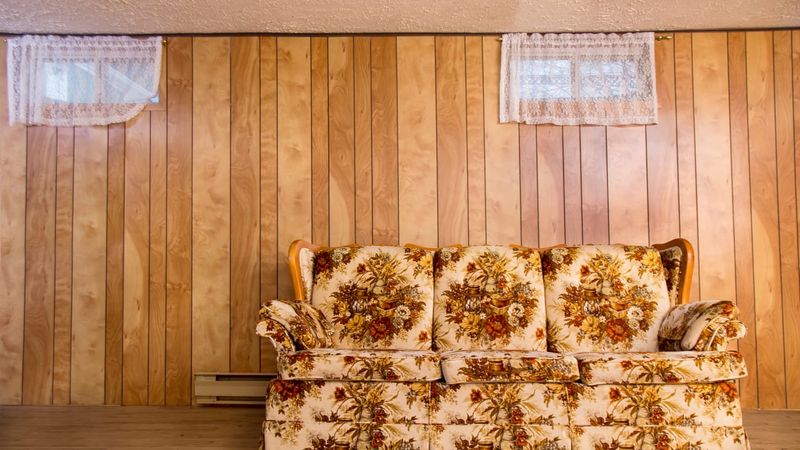
Dark, dreary, and instantly transporting you back to the Brady Bunch era. The honey-toned or dark brown panels once signified sophistication.
Wood paneling makes rooms feel smaller and darker. While some modern designers have found ways to incorporate it tastefully, the floor-to-ceiling versions in many Boomer homes create a cave-like atmosphere that buyers find claustrophobic and dated.
4. Wallpaper Borders
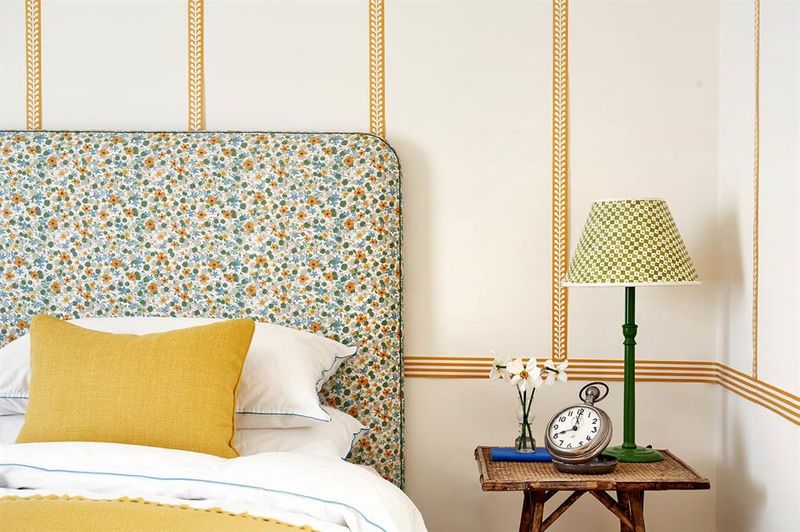
Running along the ceiling edge, these decorative strips were once considered the perfect finishing touch. Floral patterns, country motifs, and themed borders ruled the day.
Wallpaper borders instantly date a room to the 80s and 90s. Removing these sticky remnants of bygone decor can be a tedious process, but eliminating them creates cleaner lines and a more timeless look that appeals to today’s homebuyers.
5. Bathroom Carpet

Fuzzy toilet seat covers and matching floor carpets were bathroom status symbols. The 70s and 80s bathroom wasn’t complete without them!
Bathroom carpeting is a breeding ground for mildew, bacteria, and odors. Modern bathrooms feature waterproof flooring like tile or luxury vinyl that’s both practical and stylish. Replacing carpeted bathrooms is one of the fastest ways to update a Boomer home.
6. Brass Everything
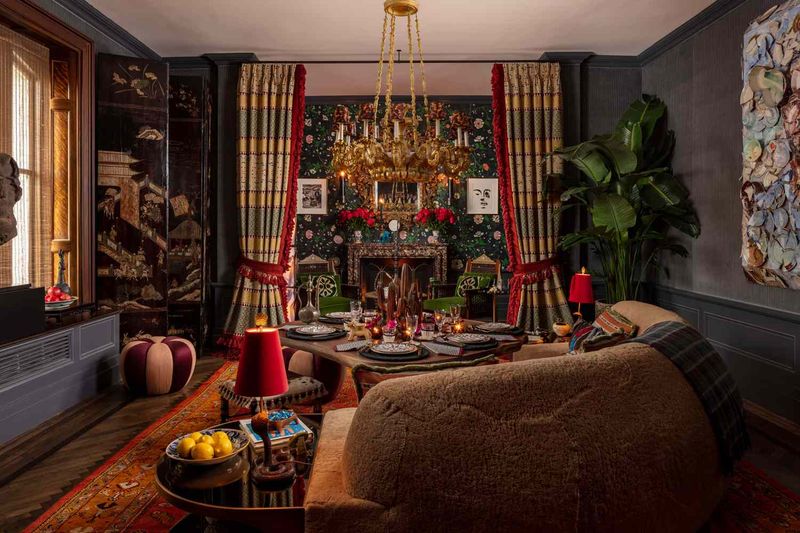
Gleaming fixtures on every door, cabinet, and light fixture scream 1980s excess. The shinier, the better was the motto for hardware.
Brass fixtures often develop a dated patina over time. While some brass is making a comeback in modern decor, the shiny yellow-gold versions in many Boomer homes look outdated. Switching to brushed nickel, matte black, or contemporary brass designs can instantly refresh a space.
7. Avocado Appliances
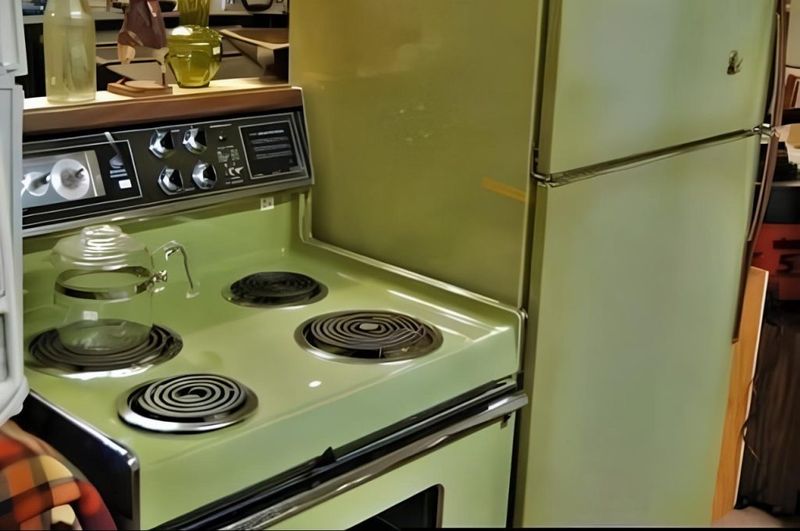
Green refrigerators, ovens, and dishwashers were the height of kitchen fashion. Paired with harvest gold or burnt orange, these colorful appliances made a statement.
Avocado green appliances instantly date a kitchen to the 1970s. Beyond their retro appearance, these aging appliances typically consume more energy than modern counterparts. Replacing them improves both aesthetics and efficiency in one renovation.
8. Mirrored Walls
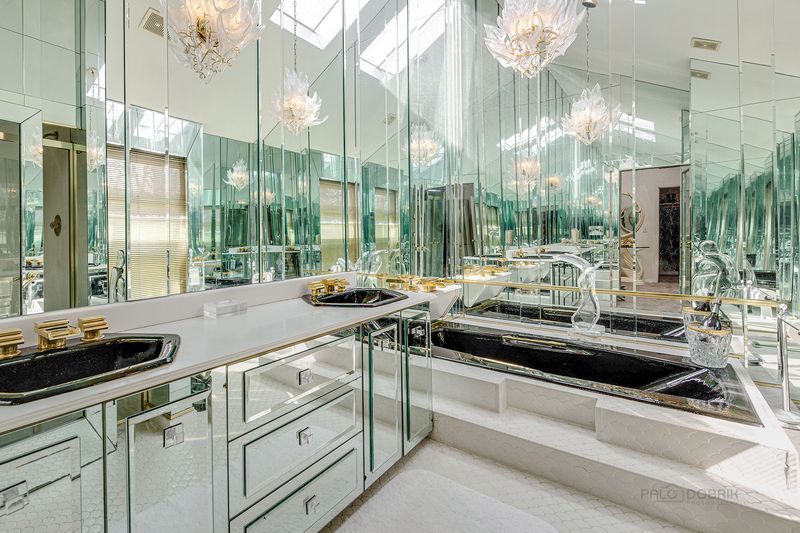
Reflective surfaces were thought to make spaces feel larger and more glamorous. Entire walls covered in mirrors created a dazzling disco-era vibe.
Mirrored walls overwhelm rooms with reflections and create a dated, 1970s atmosphere. They show every fingerprint and smudge while making spaces feel like a dance studio. Removing them and replacing with painted drywall creates a clean, contemporary backdrop for modern decor.
9. Heavy Window Treatments
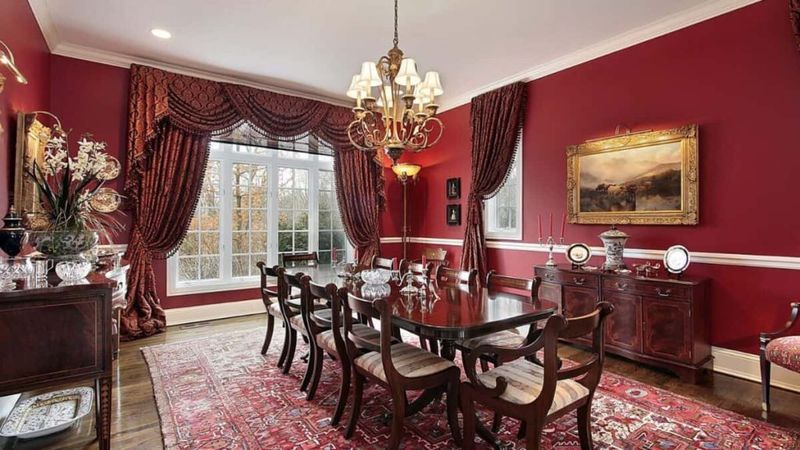
Elaborate valances, swags, and floor-length drapes once conveyed luxury and sophistication. Layered window coverings with matching patterns were all the rage.
Heavy window treatments block natural light and collect dust. The ornate styles popular in Boomer homes appear fussy and dated to younger buyers. Replacing them with simple blinds or lightweight curtains instantly brightens rooms and creates a more contemporary, airy feeling.
10. Sponge-Painted Walls

DIY texture techniques created distinctive walls in vibrant colors. Homeowners proudly spent weekends creating these artistic statements with specialized sponges and multiple paint colors.
Sponge-painted walls were the hallmark of 90s home makeover shows. The busy, textured appearance creates visual noise that fights with furniture and artwork. A fresh coat of neutral paint instantly updates these spaces and provides a clean backdrop for contemporary decor.
11. Lacquered Furniture
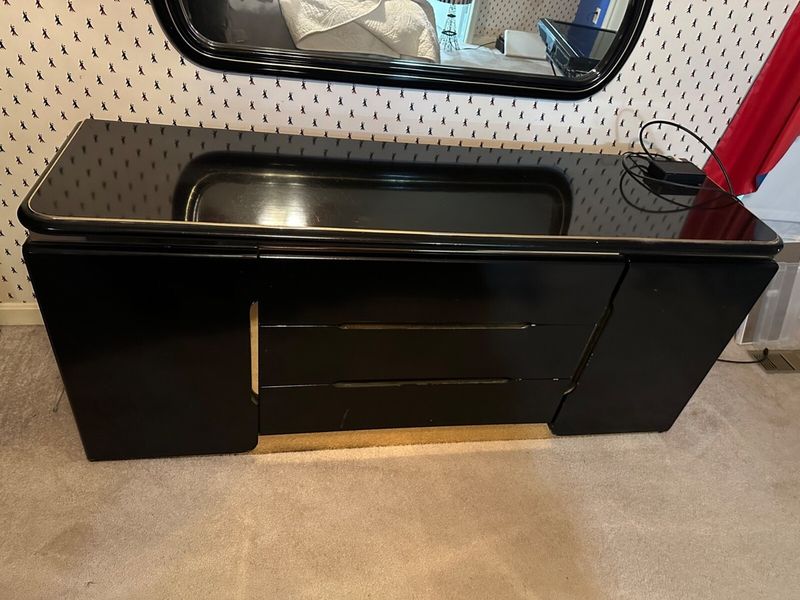
High-gloss finishes on bulky bedroom sets and dining room tables were considered elegant and formal. Matching sets in cherry or white lacquer dominated showrooms.
Lacquered furniture pieces are heavy, inflexible for modern living, and often show scratches and wear. Today’s design preferences lean toward mixed materials, lighter woods, and more casual finishes. Updating these pieces through refinishing or replacement creates a fresher, more contemporary look.
12. Bathroom Countertop Toiletries
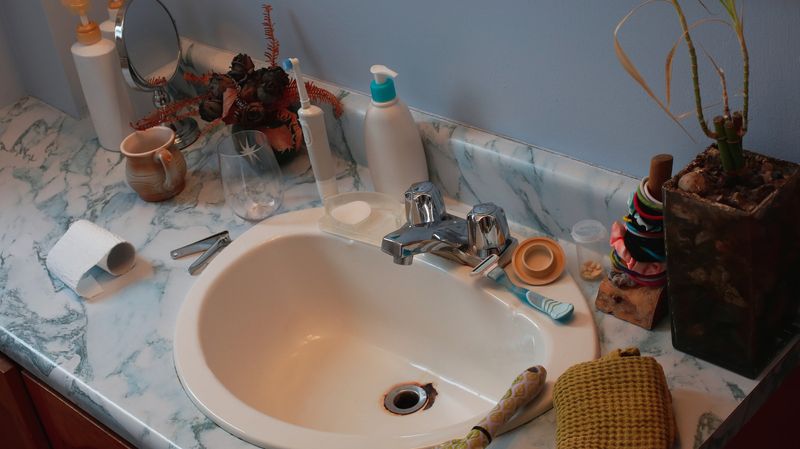
Decorative soap dishes, tissue box covers, and toothbrush holders cluttered every available surface. Coordinated bathroom accessories in ceramic, plastic, or brass were essential status symbols.
Bathroom countertop collections create visual clutter and collect dust and soap scum. Modern bathroom design favors clean surfaces and minimal accessories. Clearing these dated items and installing proper storage solutions makes bathrooms feel instantly larger and more contemporary.
13. Tiled Countertops
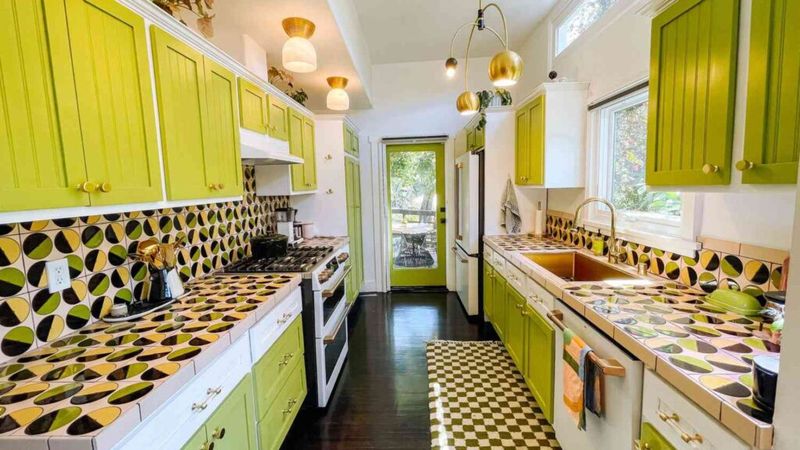
Small ceramic squares with deep grout lines covered kitchen work surfaces. Popular in the 70s and 80s, these countertops were considered practical and decorative.
Tiled countertops create uneven surfaces that catch crumbs and harbor bacteria in grout lines. Food preparation becomes challenging on these bumpy surfaces. Replacing them with seamless materials like quartz or solid surface creates a more functional kitchen that appeals to modern buyers.
14. Vertical Blinds
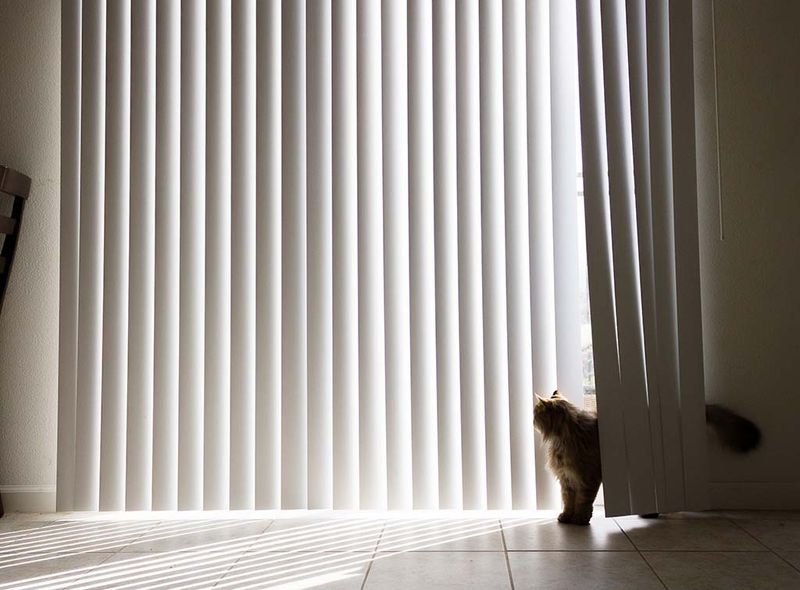
Plastic slats that clack together with every breeze were the window covering of choice. Often in beige or white, these practical coverings adorned sliding glass doors everywhere.
Vertical blinds break easily, collect dust in hard-to-clean crevices, and scream “rental property.” The plastic versions in particular yellow with age and sun exposure. Replacing them with panel curtains or modern sliding treatments instantly elevates the appearance of a room.
15. Fake Plants

Artificial greenery filled corners and topped kitchen cabinets in every well-decorated home. Dusty silk arrangements in wicker baskets were must-have accessories.
Fake plants collect dust and fade over time, creating sad imitations of living things. Today’s design sensibility favors real plants or nothing at all. Removing these dated accessories and replacing them with a few quality live plants brings actual life and improved air quality to rooms.
16. Tuscan Kitchen Theme

Faux-finished walls in burnt orange and gold created Mediterranean vibes without leaving home. Grape motifs, olive oil bottles, and “Live, Laugh, Love” signs completed the look.
Tuscan kitchens feel heavy and dark by today’s standards. The themed approach with matching accessories creates a time capsule effect. Updating to a lighter, more timeless palette with cleaner lines makes kitchens feel larger and more inviting to modern sensibilities.
17. Fuzzy Toilet Lid Covers
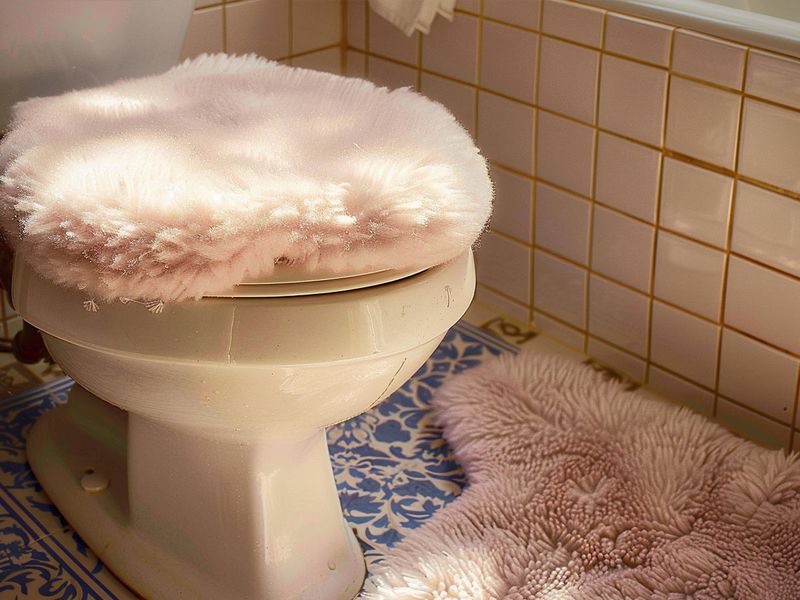
Plush fabric wrapping the toilet was once considered the height of bathroom luxury. Often matched to rugs and tissue box covers for the complete ensemble.
Fuzzy toilet covers trap moisture and bacteria in a place that should prioritize cleanliness. These bathroom accessories fell out of favor for hygienic reasons as much as aesthetic ones. Removing them immediately updates a bathroom and improves its cleanliness factor.
18. China Cabinets Full Of Collectibles
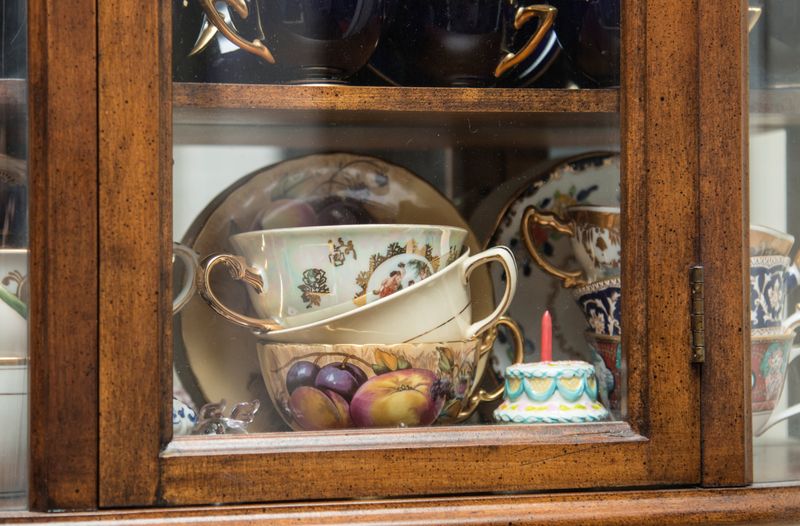
Curio cabinets displayed precious figurines, commemorative plates, and never-used crystal. These showcase pieces dominated dining rooms and living areas.
China cabinets filled with collectibles create visual clutter and require constant dusting. Modern design favors cleaner lines and more purposeful displays. Paring down collections and updating or removing these large furniture pieces creates a more spacious, contemporary feeling in dining and living areas.


